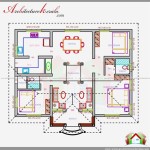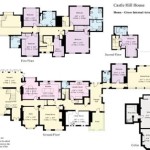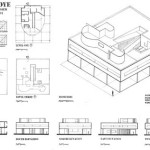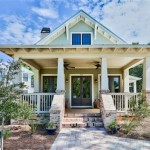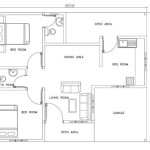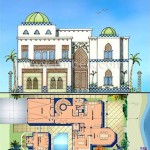Small Octagon House Plans: A Guide to Essential Aspects
Small octagon houses, distinguished by their unique and captivating geometric shape, have become increasingly popular in recent years. These homes offer a harmonious blend of functionality, aesthetics, and sustainable design, making them an ideal choice for homeowners seeking an unconventional yet practical abode.
When embarking on the journey of building a small octagon house, it is essential to understand the core aspects that define this architectural style. This guide delves into the key design considerations, space planning, and construction methods to provide a comprehensive overview of these remarkable structures.
Design Considerations
The octagonal shape is the defining characteristic of these homes, offering distinct advantages over traditional rectangular forms. The multiple angles and facets create a visually dynamic exterior, while the inward-facing walls allow for efficient use of space.
Natural light plays a significant role in the design of small octagon houses. The incorporation of large windows or skylights maximizes daylight exposure, creating a bright and airy ambiance. The orientation of the house should consider the position of the sun to optimize natural lighting.
Space Planning
The unique shape of octagon houses requires thoughtful space planning to ensure functionality and comfort. The central core, around which the octagonal rooms are arranged, often houses common areas such as the living room, kitchen, and dining space.
Inward-facing rooms can be adapted to various purposes, including bedrooms, bathrooms, and utility spaces. The versatility of the layout allows for customized floor plans that cater to specific needs and lifestyles.
Construction Methods
Small octagon houses can be constructed using a variety of methods, including traditional stick framing and prefabricated panelized construction. Stick framing involves building the structure on-site from individual lumber components.
Prefabricated panelized construction, on the other hand, utilizes pre-assembled sections that are transported to the site for assembly. This method can offer advantages in terms of time efficiency and cost-effectiveness.
Sustainability
Octagon houses inherently promote sustainable design principles. The compact shape minimizes the building's footprint, reducing material consumption. The multiple angles and facets enhance natural ventilation, reducing the need for artificial cooling.
Additionally, the use of energy-efficient materials, such as insulation and passive solar design elements, can further improve the home's environmental performance.
Conclusion
Small octagon house plans present a unique and versatile architectural approach for homeowners seeking an unconventional yet practical abode. By understanding the essential design considerations, space planning, construction methods, and sustainability aspects, prospective builders can create a harmonious and efficient living environment.
Whether you are captivated by their aesthetic charm or drawn to their functional benefits, small octagon houses offer a timeless and sustainable solution for modern living.

House Design Book Small And Tiny International Home Plans Round Octagon

Unique Modern Octagon Style House Plan 8652 The

Octagon House Cottage Floor Plans Model Plan

The Octagon 1371 3 Bedrooms And 2 5 Baths House Designers

Floorplan Hexagon House Octagon Floor Plans

Octagonal Cottage Home Plan 42262wm Architectural Designs House Plans

This Company Specializes In Creating Home Additions Shaped Like An Octagon Core77

Small Octagon House Floor Plan Plans And More

Topsider S Octagon Houses And Octagonal Home Designs

Topsider S Octagon Houses And Octagonal Home Designs

